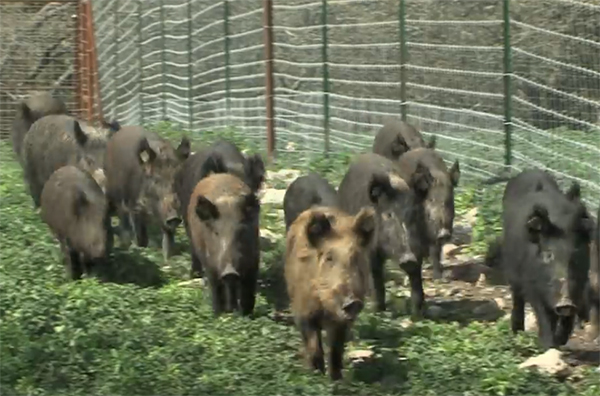While there are an estimated 6 million feral hogs nationwide, nearly half of those are believed to inhabit Texas. When one hog can reproduce into 200 hogs in the matter of just two years, wreaking millions of dollars’ worth of economic, environmental, and agricultural havoc annually, getting this invasive species under control is a priority for the state, if not the nation.
The rise of the feral hog follows the storyline of virtually every invasive species – a non-native is brought to a new land and “escapes.” From kudzu in Georgia to Asian carp in the Mississippi to feral hogs in Texas (and beyond), once the non-native species genie is out of the bottle it’s a sometimes seemingly insurmountable task to get it back in. But where there is a will there is a way, and new technologies may lead it.
In addition to their legendary fecundity, feral hog populations continue to grow thanks to their super-pig strength, smarts, and comfort with eating their young when the pantry’s bare. Feral hogs are known for their sometimes monstrous size (a friend reported seeing one he estimated at 400+ pounds this past weekend in Pearsall, Texas), almost armor-like skin (same friend tried to take down same hog and said “it was like the bullets bounced off of him”), and remarkable wiliness, often rendering guns and traps useless. But a potential game changer for controlling these non-game nuisances may be making headway.
Over the past few years, smart phone- operated hog traps have gained in popularity and success rates. Not only have feral hogs become adept at outsmarting traditional traps, those traps are also not smart enough to discern the difference between a feral hog and a non-target animal. But new mobile phone “apps” that combine surveillance software with a wireless-controlled gate activated by your phone or computer are making headway in the battle that, perhaps, may never be won but may be managed.
Hog traps have commonly been a 4-foot by 8-foot cage with bait set to lure in a hog to trip a spring-loaded gate. The downsides of this method of trapping are only a very small number of feral hogs can be captured with a single-hog trap and wary hogs will also just avoid the small traps altogether. As part of the mobile phone app system, a much larger circular pen is built with a remote-activated gate. Hogs are lured in to the “corral” with a large feeder in the center. When the hogs enter the pen a motion sensor camera snaps a photo which is then transmitted to your phone or computer. The apps also allow you to check the trap cameras any time, so that when you’re ready, you can then enter a code via your phone or computer to shut the gate. By being able to see what you’re trapping, you can also protect any non-target animals that enter your pen.
Providers of these types of “wireless” traps report dozens of hogs being trapped in just one night and many hundreds over the course of a year. They also suggest that landowners can pay for the cost of the system installation by selling the culinary-coveted “wild boar” for slaughter.
Just to maintain current levels, almost 70 percent of the state’s feral hog population must be eliminated each year to keep up with their fast rate of reproduction. While this new technology might not be the ultimate eradication solution, given its potential for capturing many with a few taps on a device versus trapping one in a cage or shooting one from a helicopter, the potential is promising.
To learn more about feral hogs, visit Texas Parks and Wildlife.









